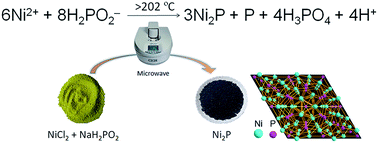Synthesis of bulk and supported nickel phosphide using microwave radiation for hydrodeoxygenation of methyl palmitate
Abstract
In this paper, we proposed a novel method for preparing bulk and supported Ni2P catalysts under mild conditions. Ni2P and Ni2P/SiO2 were synthesized from nickel hypophosphite precursors at 230 °C for 5 min using a CEM Discover microwave reactor, and the initial reaction temperature is about 202 °C. The catalysts were characterized using XRD, TEM, SEM, XPS, BET, carbon monoxide chemisorption, and the catalytic performance was tested for hydrodeoxygenation (HDO) of methyl palmitate in a fixed-bed reactor. Interestingly, microwave irradiation does not result in sintering of Ni2P particles. The principal products of the HDO reaction for both catalysts are pentadecane and hexadecane. Isomerization products were not detected, and other by-products content is very low (<1%). The HDO results demonstrate that the catalyst prepared using a microwave has better activity than that prepared using calcination.


 Please wait while we load your content...
Please wait while we load your content...